Richter's Manor in Costa Rica | unique double washing treatment, introduction to the manor of origin
Costa Rica Tarrazu
El Balar Double Washed
[Costa Rica double washing]
Producing area: Tarazhu producing area of Costa Rica
Manor: Ray's Manor
Altitude: 1500 m
Bean seed: Kaddura
Treatment: double washing
Picking and processing time: 2017
Baking degree: shallow and medium baking
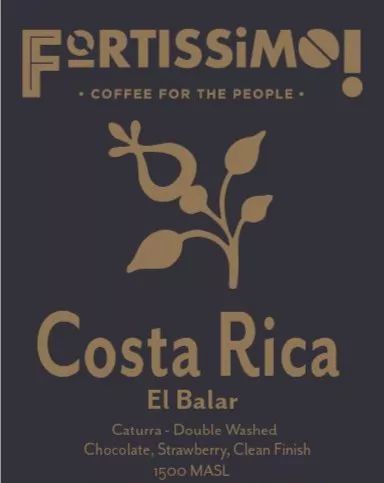
[Reich Manor]
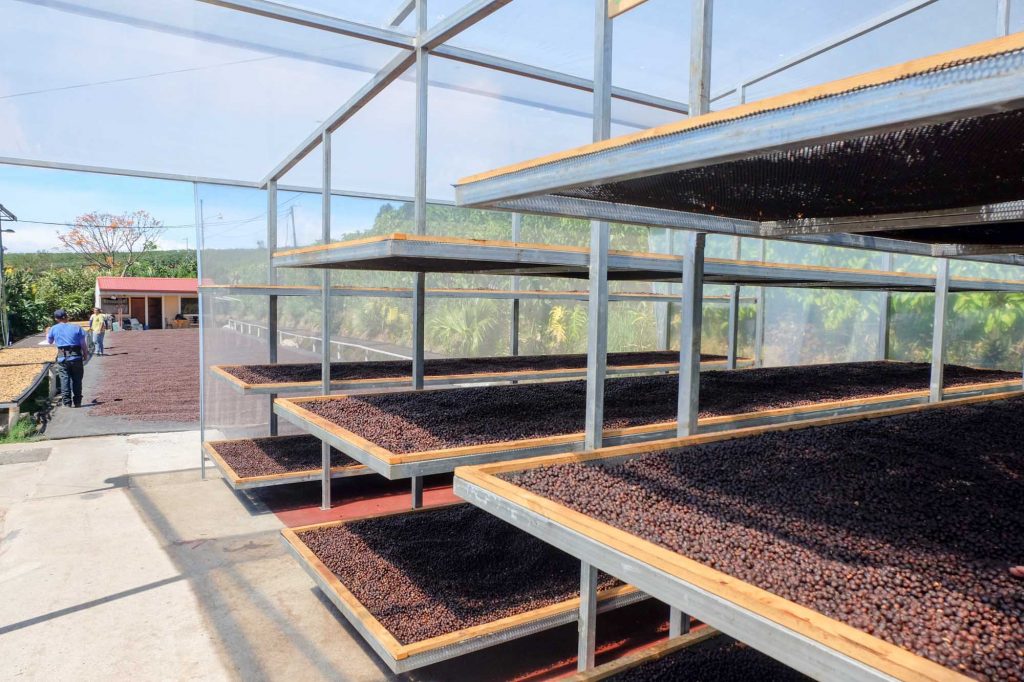
El Balar is a 5-hectare farm where Kaddura is grown. It is owned by the father of three siblings: Leo,Melvin and Elian Robles, who worked on the farm with their father for many years.
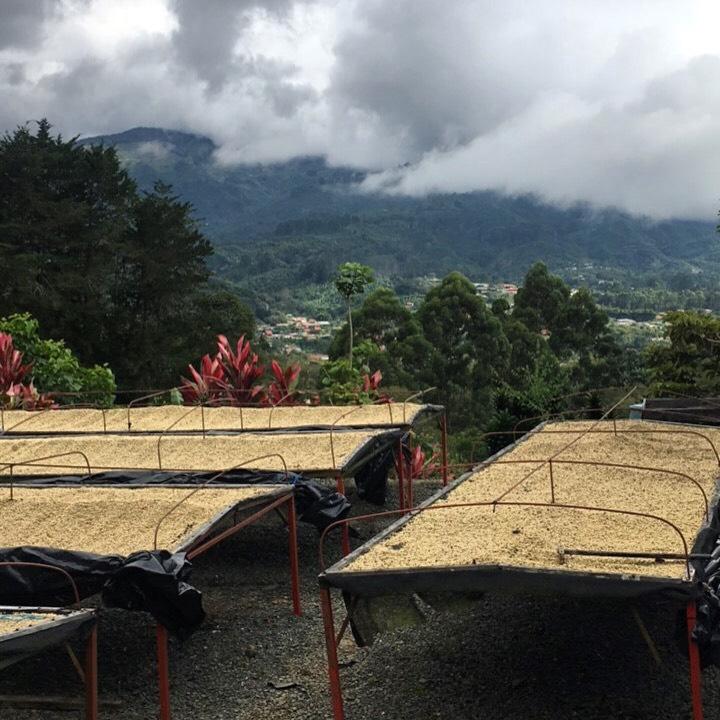
El Balar is located in San Marcos de Talajul at an altitude of about 1500 meters. The farm has sandy, fertile soil for growing good coffee. They have been processing their own coffee for more than 10 years and were one of the pioneers in creating a washing plant at Tarazhu.
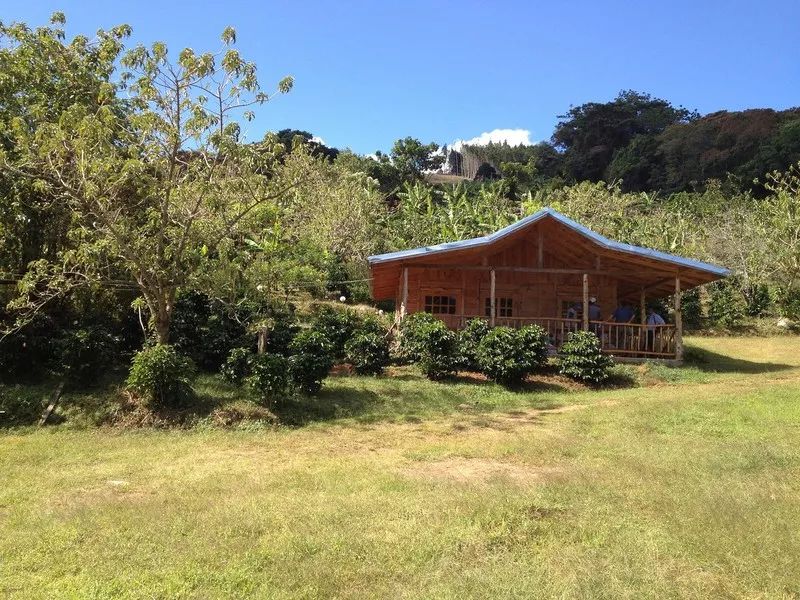
01 | Origin description
Costa Rican coffee plantations with fertile volcanic ash, mild and suitable temperatures, and stable and abundant rainfall are one of the reasons why coffee has become one of the main agricultural products in Costa Rica. Its coffee beans are all Arabica species. The flavor is pure, the aroma is pleasant, and it has an impeccable balance in acidity and taste.
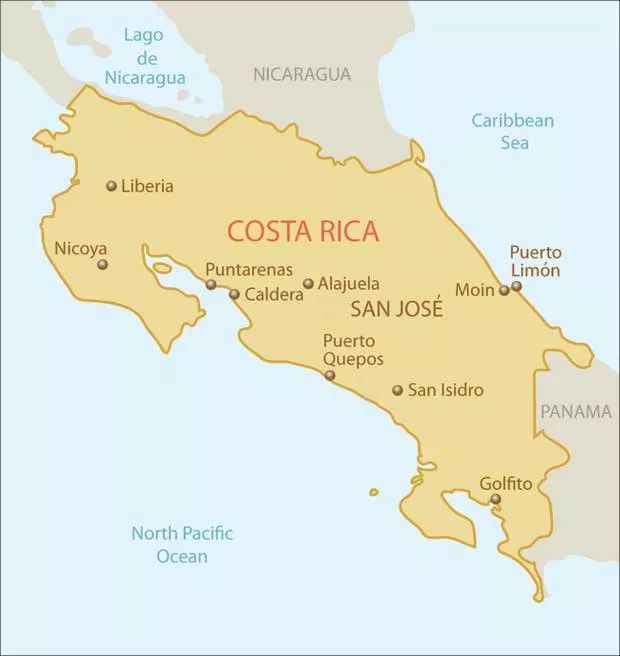
Tarazhu producing area has the highest average latitude and excellent climate and soil conditions, which makes Tarazhu the most famous and generally recognized coffee producing area in Costa Rica. Sanshui River (Tres Rios) is a famous small producing area in Tarazhu producing area. The most famous single estate coffee in Costa Rica in the boutique coffee world is the La Minita estate in Tarazu District, which produces only 160000 pounds a year. The climatic conditions in Costa Rica are very different, completely subverting the classification of the four seasons of the year, there are only two seasons, April to December is winter, with a lot of rainfall, and from the end of December to April the following year is the dry season, also known as summer. The annual average temperature in San Jose, the capital, ranges from 15 ℃ to 26 ℃, while the temperature in the coastal areas is relatively high, with a night average temperature of 21 ℃ and a daily average temperature of 30 ℃ in the Caribbean.
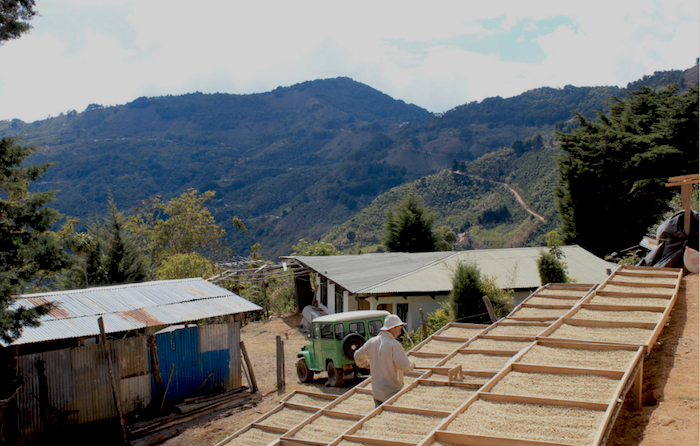
Planting conditions
The coffee beans produced at the high latitudes of Costa Rica are famous in the world, full-bodied, mild in taste, but extremely sour. The coffee beans here have been carefully processed, which is why they have high quality coffee. Costa Rica's volcanic soil is very fertile and well drained, especially in the central plateau CentralPlateau, where the soil consists of successive layers of ash and dust. Costa Rican coffee has full particles, ideal acidity and unique strong flavor.
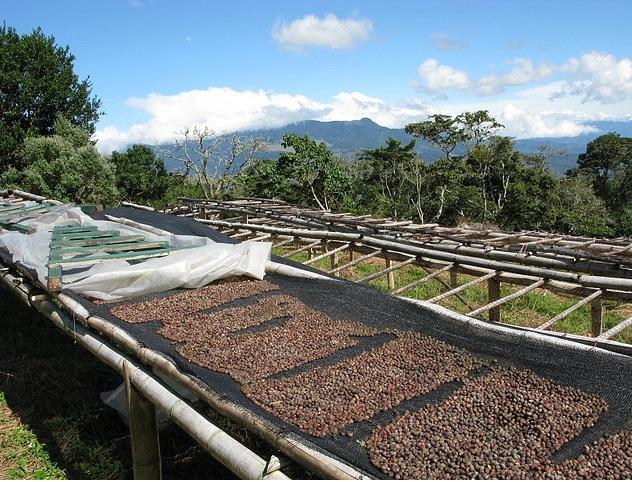
02 | processing method
[double washing]
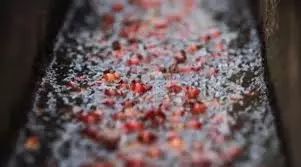
First washing and fermentation, 12 hours
After the coffee cherry harvest, the beans will first be picked by the specific gravity of the water flow; the principle is that the coffee fruit itself is screened by the difference in density and quality; the coffee beans with high density (heavy weight) will sink into the water, while the coffee beans with low density will float. The coffee fruits with high mature quality have high density, so they are screened out for further treatment.
After the high-quality and ripe fruits are selected, the peel is removed, washed and soaked, and the pectin mucus attached to the outer layer of raw beans is fermented. Pectin has natural sugars and alcohols, which play an important role in the development of sweetness, acidity and overall flavor of coffee.
The fermentation time is as long as 12 hours, and after fermentation, 80% of the pectin is removed, leaving only the flavor in the coffee beans.
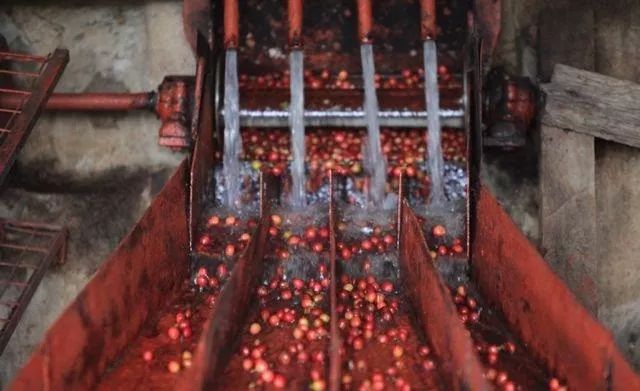
Second washing and fermentation, 12 hours
Then enter the second washing fermentation process. After the coffee beans in the previous stage are cleaned, they are soaked in water again for 24 hours. This process increases proteins and amino acids, and the acidity of coffee beans creates complex and delicate layers of taste.
Finally, remove all remaining pectin and move the coffee beans to a high shelf for sun drying, depending on the weather.
The coffee is taken to the courtyard and raised to the hospital bed to dry in the sun for about 8 to 10 days. They measured the moisture in the beans and stored them in clean plastic bags in a warehouse when the moisture content was 10.5%.
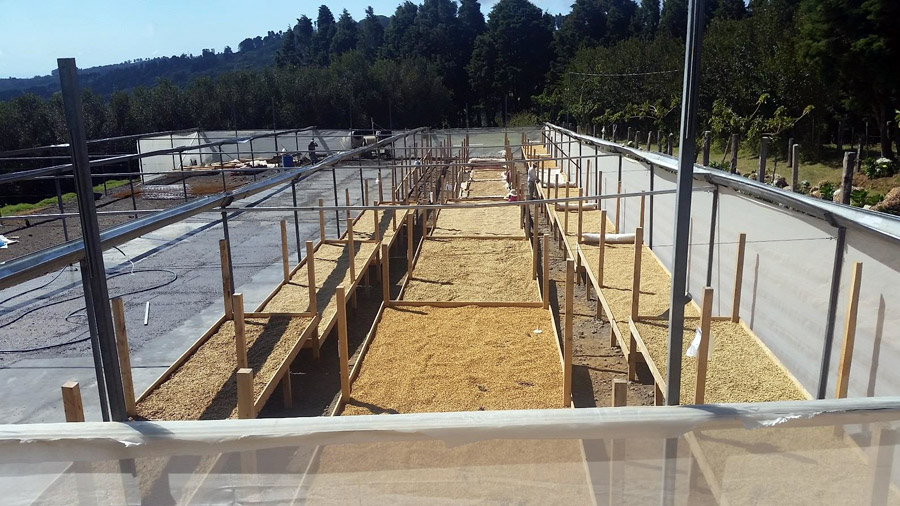
03 | Analysis of raw beans
[Costa Rica double washing]
Variety: Kaddura
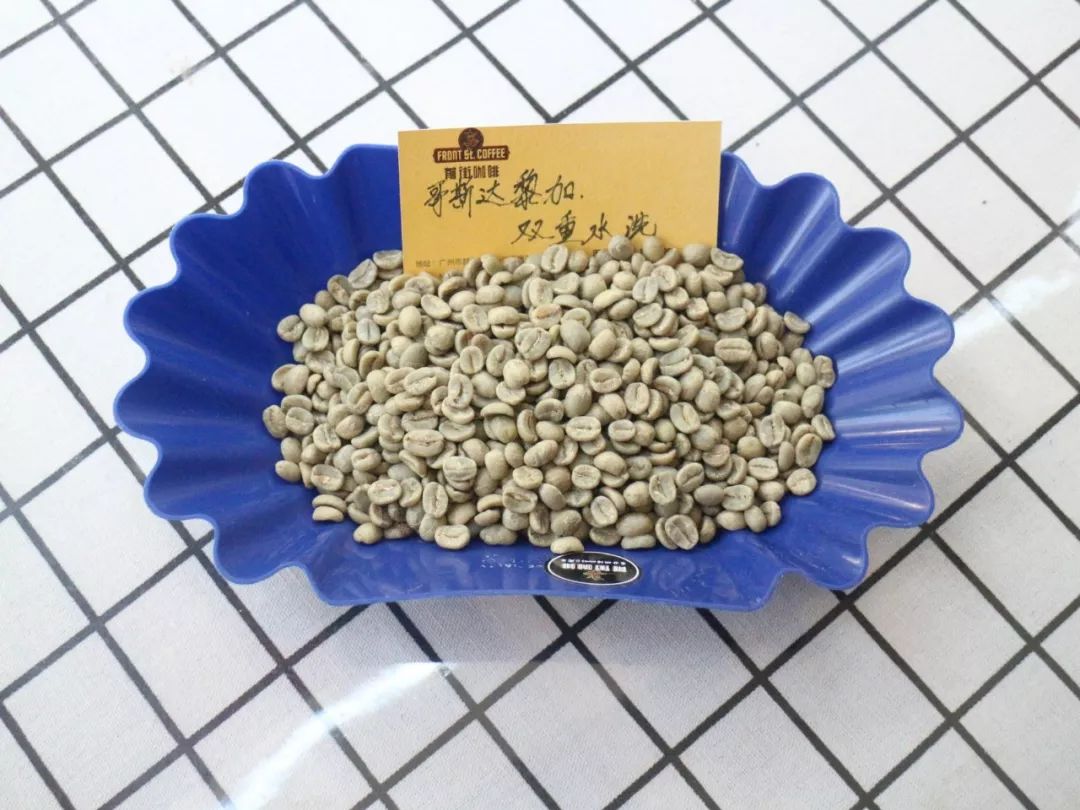
Kaddura's taste is full of fruit, sour berries, a little spiny, the finish is full of blueberries, raw beans look hard green, this is the most important feature of Kaddura.
04 | Baking analysis
This coffee has medium granule size, medium density and low water content. The goal of baking is shallow and medium baked, unlike other Costa Rican honey-treated beans, this Costa Rican double washing will not have the fruit fermentation flavor brought by honey treatment, and there should be a great improvement in cleanliness, so shallow and medium baking is used to show the bright acidity of the beans on the one hand and keep the taste clean and heavy on the other.
In the first batch of baking, the lower bean temperature is relatively high, the bean temperature is 200 degrees, and the firepower is also relatively high. In the baking process, it was found that although the altitude of the bean was not high, the bean quality was hard and the dehydration time was short, so the baking technique of gradually lowering the fire and climbing steadily was adopted. the firepower was fine when the beans entered the yellowing point, the dehydration was completed, and the precursors of an explosion were adjusted to avoid burns on the bean surface, and choose to come out before the end of an explosion to retain enough fruit acid.
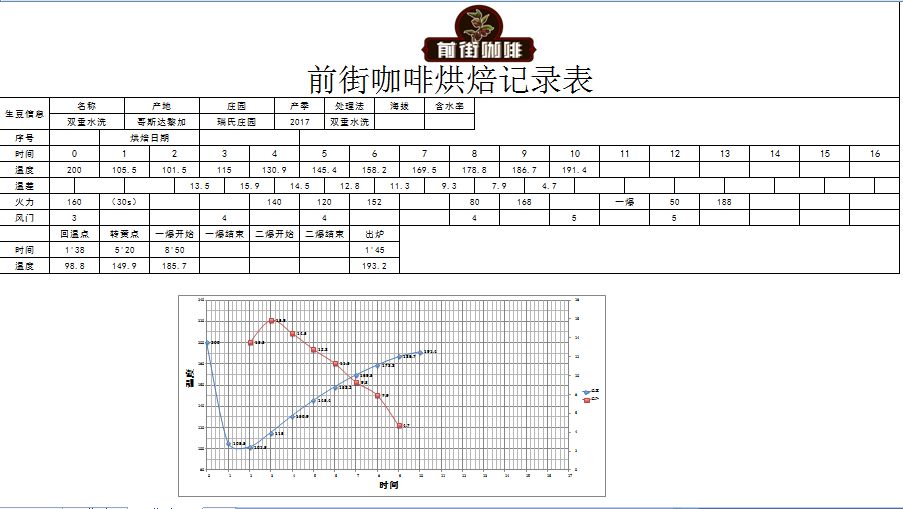
Roaster Yangjia 600g semi-direct fire
Enter the pot at 200 degrees Celsius, adjust the firepower to 160 degrees after opening the throttle for 3, 30 seconds, keep the throttle unchanged, the temperature recovery point is 1: 38 ", keep the firepower, when 5: 20", the bean surface turns yellow, the smell of grass disappears completely, enter the dehydration stage, the firepower is reduced to 120 degrees, and the throttle is adjusted to 4.
After dehydration, the firepower dropped to 80 degrees Celsius and black markings appeared on the bean surface at 8: 30, and the smell of toast obviously changed to coffee, which can be defined as a prelude to an explosion. At this time, listen carefully to the sound of the explosion point. Start the explosion at 8: 50 ", turn the firepower down to 50 degrees, and the throttle should be fully opened 5 (the firepower should be very careful, not so small that there is no burst sound). Develop 1: 45 "after an explosion, put into the pot at 193.2 degrees."
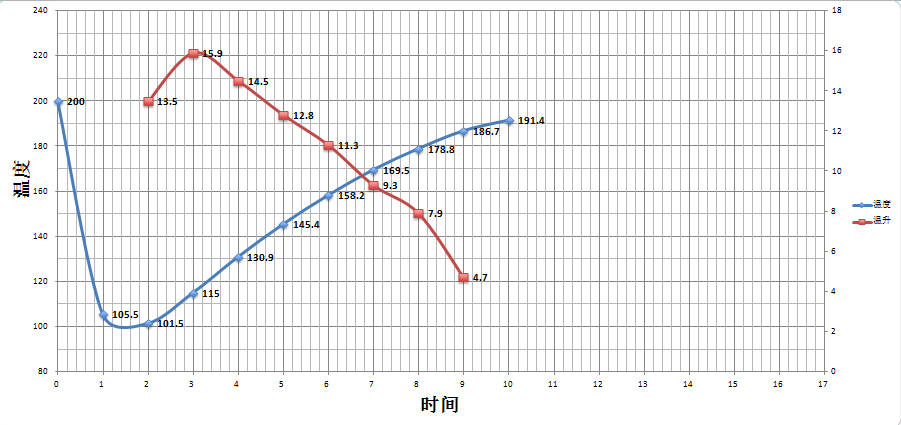
This Costa Rican double water wash is well balanced, with the flavor of nuts, cream, sugar cane, hazelnut and melon seeds.
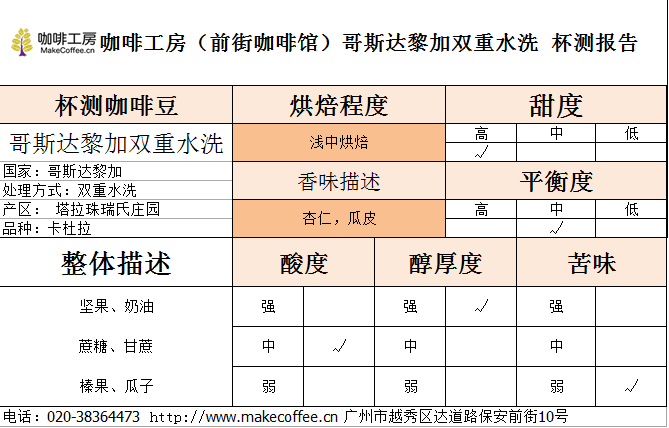
05 | Cooking analysis
Recommended cooking method: hand flushing
Degree of grinding: 3.5 (Japanese little Fuji R440)
V60 filter cup, 15g powder, water temperature 90 degrees, grinding degree 3.5, ratio of water to powder 1:15
Stew with 40 grams of water for 30 seconds
Section: water injection to 107 g cut off water, slow water injection to 227 g.
That is, 40-107-227
The total time is 2 minutes and 02 seconds.
BG grind 4QM 90 degrees water temperature.
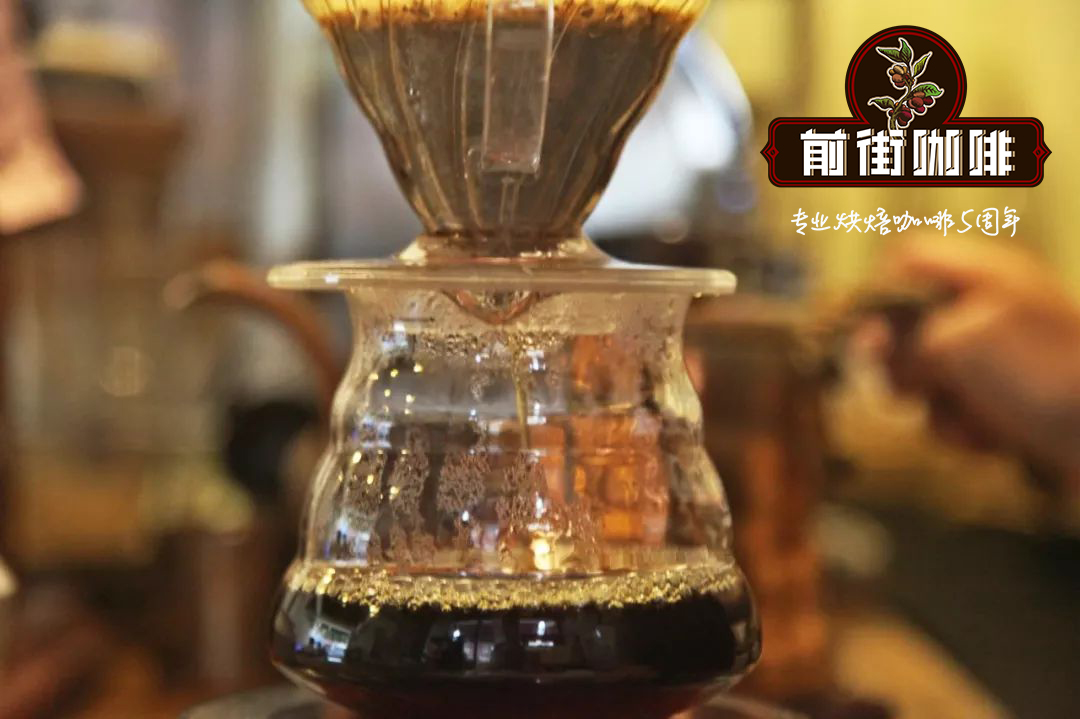
Bean grinder
Grinding degree
Powder quantity
Filter cup
BG
4Q
15g
V60
Water temperature
Stuffy steam
The second stage of water quantity
The third stage of water quantity
Total time 2:02
90 degrees
40g water for 30s
67g
120g
Total water volume: 227g
Sweetness: ☆☆☆
Acidity: ☆☆
Bitterness: ☆
Other suggestions for trickling extraction:
French pressure kettle: recommended grinding degree of 3.5 to 4, water temperature 91 degrees
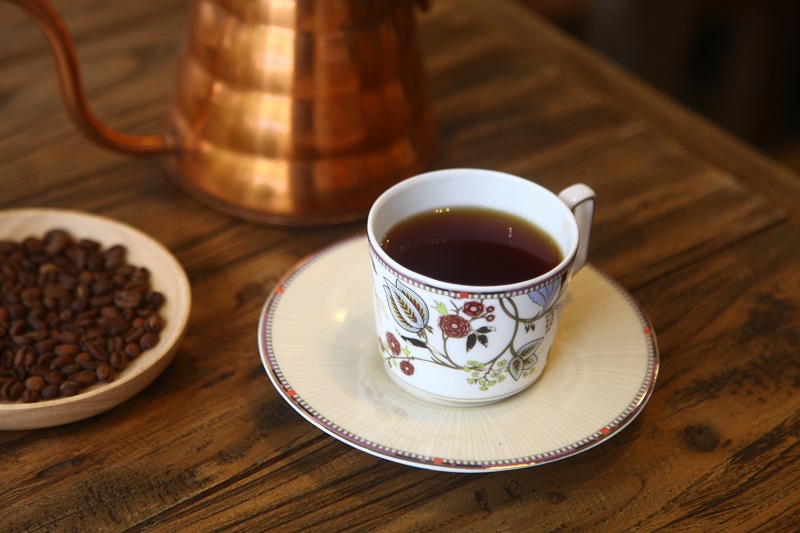
Important Notice :
前街咖啡 FrontStreet Coffee has moved to new addredd:
FrontStreet Coffee Address: 315,Donghua East Road,GuangZhou
Tel:020 38364473
- Prev
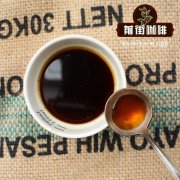
Jensen manor rose summer introduction? What are the flavor characteristics of Jason rose summer?
Professional coffee knowledge exchange More coffee bean information Please pay attention to coffee workshop (Weixin Official Accounts cafe_style) Basic information Panama janson geisha washed Production area: volcan Manor: Familia Janson Variety: Geisha Elevation: 1,700 meters Grade:
- Next
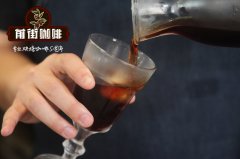
How to make delicious iced coffee? what kind of iced coffee do you have?
Professional coffee knowledge exchange more coffee bean information please follow the coffee workshop (Wechat official account cafe_style) the same brewing method as hot coffee, a cup of coffee powder using about 1215g, pour into about 140cc hot water, brew a slightly stronger coffee liquid. Pour the coffee liquid into a glass filled with ice and stir to make a mellow iced coffee. I'll have an ice coffee.
Related
- Detailed explanation of Jadeite planting Land in Panamanian Jadeite Manor introduction to the grading system of Jadeite competitive bidding, Red bid, Green bid and Rose Summer
- Story of Coffee planting in Brenka region of Costa Rica Stonehenge Manor anaerobic heavy honey treatment of flavor mouth
- What's on the barrel of Blue Mountain Coffee beans?
- Can American coffee also pull flowers? How to use hot American style to pull out a good-looking pattern?
- Can you make a cold extract with coffee beans? What is the right proportion for cold-extracted coffee formula?
- Indonesian PWN Gold Mandrine Coffee Origin Features Flavor How to Chong? Mandolin coffee is American.
- A brief introduction to the flavor characteristics of Brazilian yellow bourbon coffee beans
- What is the effect of different water quality on the flavor of cold-extracted coffee? What kind of water is best for brewing coffee?
- Why do you think of Rose Summer whenever you mention Panamanian coffee?
- Introduction to the characteristics of authentic blue mountain coffee bean producing areas? What is the CIB Coffee Authority in Jamaica?

